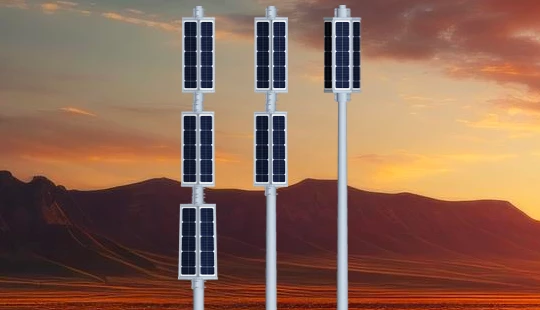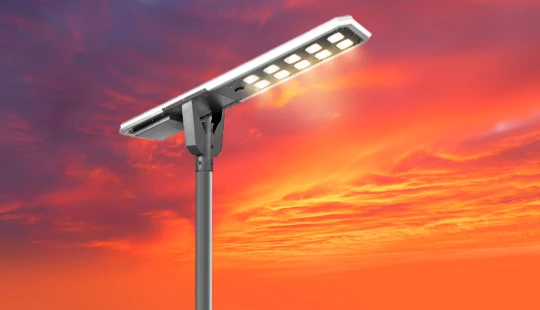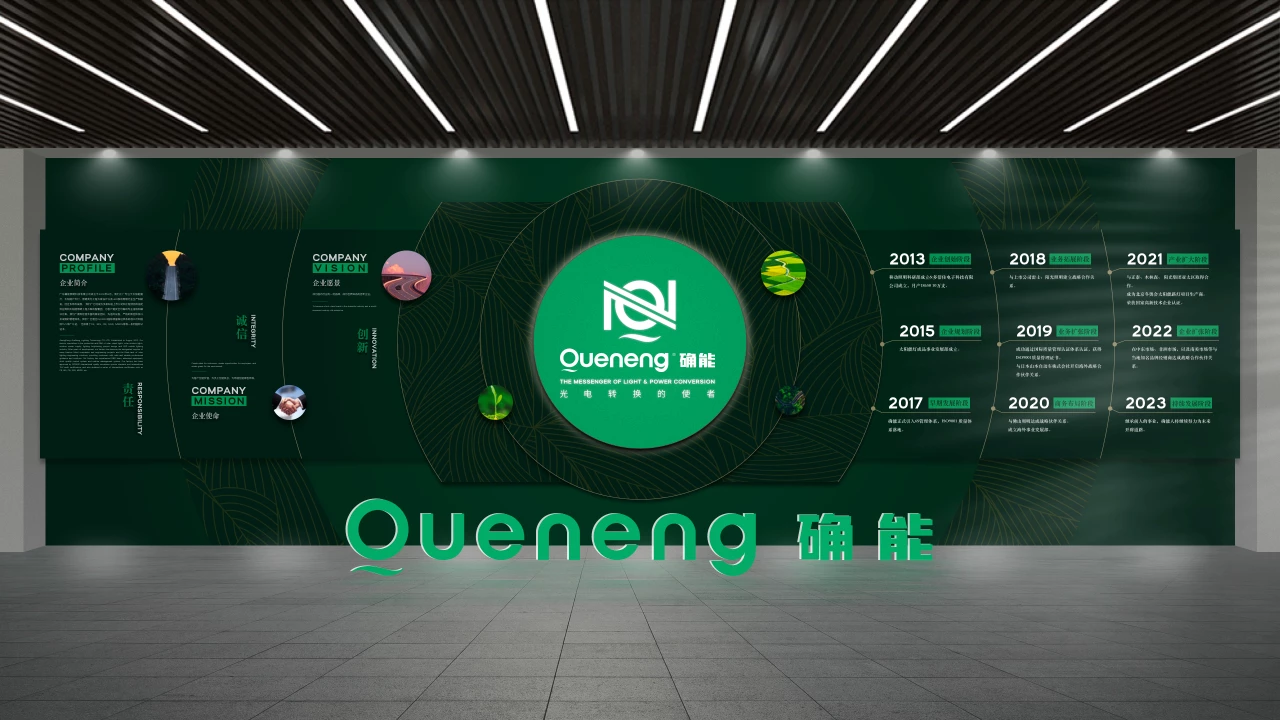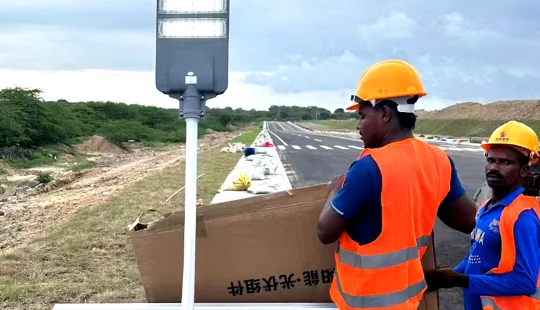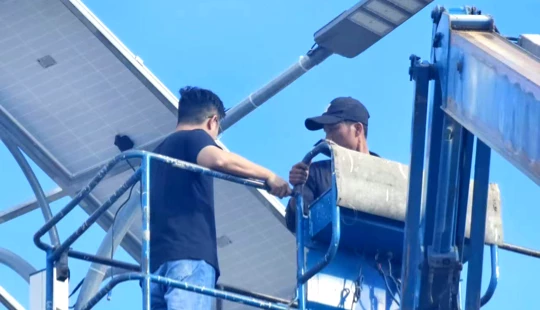how to design and calculate solar street light system | Queneng Guide
How to Design and Calculate a Solar Street Light System
Designing and calculating a solar street lighting system requires a systematic approach, balancing energy needs with available solar resources. This article provides a practical guide for professionals.
1. Assessing Energy Requirements
First, determine the lighting needs. Factors include:
* Illumination level (lux): This depends on the road type (residential, highway) and local regulations. Higher lux values require more powerful lights.
* Number of lights: This depends on road length and spacing between poles.
* Operational hours: How many hours per night will the lights operate? Consider seasonal variations.
* Lighting technology: LEDs are energy-efficient, but their power consumption still needs to be accurately calculated. Specify wattage (W) and lumen output (lm) per fixture.
2. Solar Panel Sizing
Next, calculate the daily energy consumption:
* Total wattage: Multiply the wattage of a single light by the number of lights.
* Daily energy (Wh): Multiply the total wattage by the operational hours. Add a safety margin (10-20%) to account for cloudy days.
Now, determine the required solar panel capacity:
* Panel wattage: Choose a suitable solar panel wattage.
* Number of panels: Divide the daily energy (Wh) by the panel wattage (Wp) and add a safety margin (10-20%) to account for panel efficiency and system losses. Always round up to the nearest whole number of panels.
Consider panel efficiency and available sunlight hours at the location. Consult solar irradiance maps for accurate data.
3. Battery Bank Selection
The battery bank stores excess solar energy for nighttime use. Factors to consider:
* Battery capacity (Ah): This depends on daily energy consumption and desired autonomy (number of cloudy days the system should operate without sunlight).
* Battery voltage (V): Choose a voltage compatible with the solar panel and lighting system.
* Battery type: Deep-cycle lead-acid, lithium-ion, or other appropriate battery types are suitable depending on your application. Lithium-ion generally offers longer lifespans and higher efficiency.
Calculate the required battery capacity considering the depth of discharge (DoD) allowed for the chosen battery type.
4. Charge Controller and Inverter Selection
* Charge controller: This regulates the flow of electricity from the solar panels to the battery bank, protecting the battery from overcharging. Its capacity should match or exceed the solar panel’s current output.
* Inverter: This converts the DC power from the battery to AC power for the lights. Its power rating should match the total wattage of the lights.
Select controllers and inverters appropriate for the chosen battery voltage and system capacity.
5. System Integration and Installation
Proper grounding, wiring, and protection are crucial for safety and system longevity. Follow all relevant electrical codes and regulations.
This process requires careful consideration and accurate calculations. Consulting a qualified solar engineer is highly recommended for complex installations.

Have more questions about our products or services?
The latest hot news you might like

Discover how solar panels power street lights, exploring the technology behind solar energy conversion, storage systems, and how solar-powered street lights are revolutionizing urban and rural lighting solutions.

Learn how AC Solar Hybrid Street Lights work, their advantages, disadvantages, system behavior in low-sunlight conditions, and why hybrid technology is ideal for regions with unstable sunlight.

Municipalities around the world are increasingly adopting solar-powered streetlights as part of their urban development strategies. Rising energy costs, the need for sustainable infrastructure, and government green initiatives are driving cities to switch from traditional street lighting to advanced LED solar streetlights.
Queneng Lighting provides municipalities with cost-effective, energy-efficient, and durable solar lighting solutions, ensuring safe and sustainable public spaces.
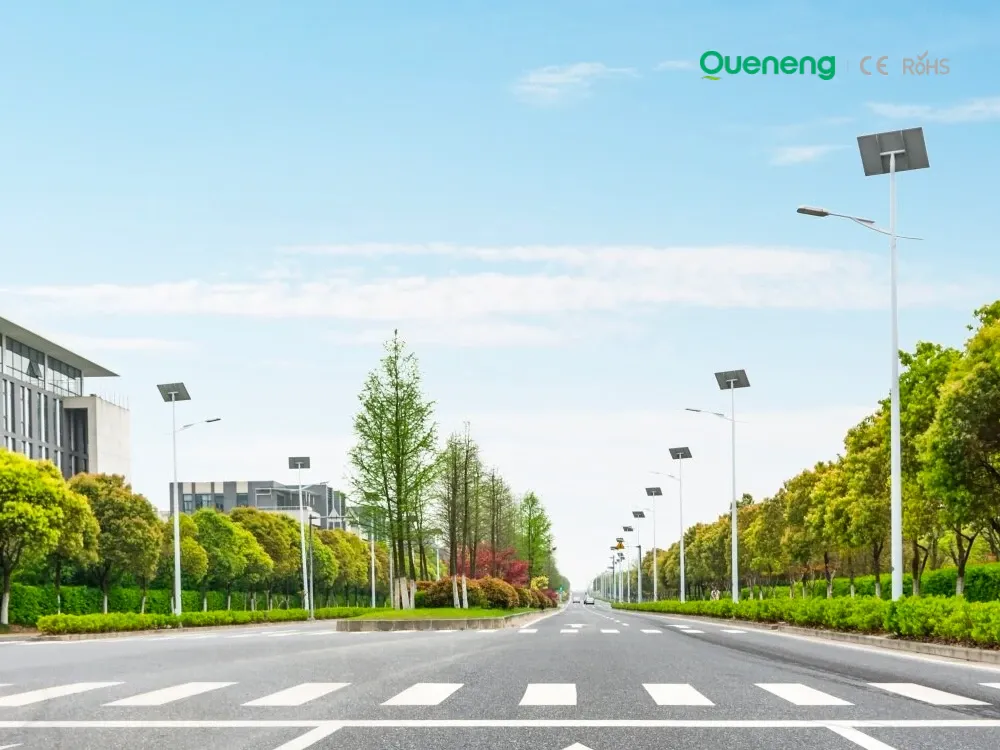
In recent years, the purchase of solar streetlights for municipalities has become a growing trend across the globe. Local governments are under pressure to reduce public expenditure, promote green energy, and create safer communities. Solar streetlights provide a reliable, cost-effective, and sustainable solution that meets these needs. Queneng Lighting, as a leading solar street lighting manufacturer, has supported multiple municipal projects worldwide with customized and energy-efficient solutions.
FAQ
Sustainability
If the light or battery fails, can it be replaced individually?
Yes. Queneng’s solar street lights are designed with a modular structure, so components such as photovoltaic panels, batteries, lights, and controllers can be replaced individually, making maintenance convenient and cost-effective.
Solar Street Light Lufei
How long does it take to install a solar street light?
Installation typically takes 1-2 hours, depending on the complexity of the setup. No external wiring is required, which makes installation faster and simpler compared to traditional street lighting.
Municipal and Public Infrastructure
Do solar streetlights require any wiring?
No, solar streetlights are entirely independent of the electrical grid. They operate using solar panels, batteries, and LED lights, eliminating the need for underground wiring.
Solar Street Light Luhua
How do Luhua solar street lights work?
Luhua solar street lights use high-efficiency solar panels to capture sunlight during the day and store it in lithium-ion batteries. These batteries then power the LED lights at night. The intelligent control system adjusts the light output based on ambient light conditions and detects motion to maximize energy savings by dimming when no motion is detected and increasing brightness when movement is sensed.
Battery fundamentals and basic terms
What is battery internal resistance?
Battery and Analysis
What are the possible reasons why the battery or battery pack cannot be charged?
2) The battery pack is connected incorrectly, and the internal electronic components and protection circuits are abnormal;
3) The charging equipment is faulty and there is no output current;
4) External factors cause charging efficiency to be too low (such as extremely low or high temperature).


Queneng's Luzhou Solar Street Light provides sustainable, energy-efficient outdoor LED lighting. Powered by solar energy, it's a cost-effective and eco-friendly solution for illuminating streets and pathways. A reliable and durable LED solar street light.

Introducing the Luqing Solar Street Light by Queneng, Efficient LED lighting powered by solar energy is perfect for illuminating outdoor areas. Harness the power of solar energy for sustainable, reliable street lighting. Ideal for eco-friendly, cost-effective outdoor illumination solutions.

The Solar Street Light offers an energy-efficient, eco-friendly solution for illuminating outdoor spaces.

Queneng’s Solar Street Lights are designed to provide reliable, energy-efficient lighting for streets, parks, and other outdoor spaces.

Queneng's Luxian Reliable Solar Street Light offers energy-saving LED lighting for outdoor use. This durable, solar-powered street light provides reliable illumination, reducing energy costs and environmental impact. A perfect solution for sustainable outdoor lighting.
If you would like more information about Queneng solar lighting solutions, please send us a message by filling out the form below. Our professional team will get back to you within 24 hours!
Rest assured that your privacy is important to us, and all information provided will be handled with the utmost confidentiality.
Schedule a Meeting

Book a date and time that is convenient for you and conduct the session in advance.
Have more questions about our products or services?

